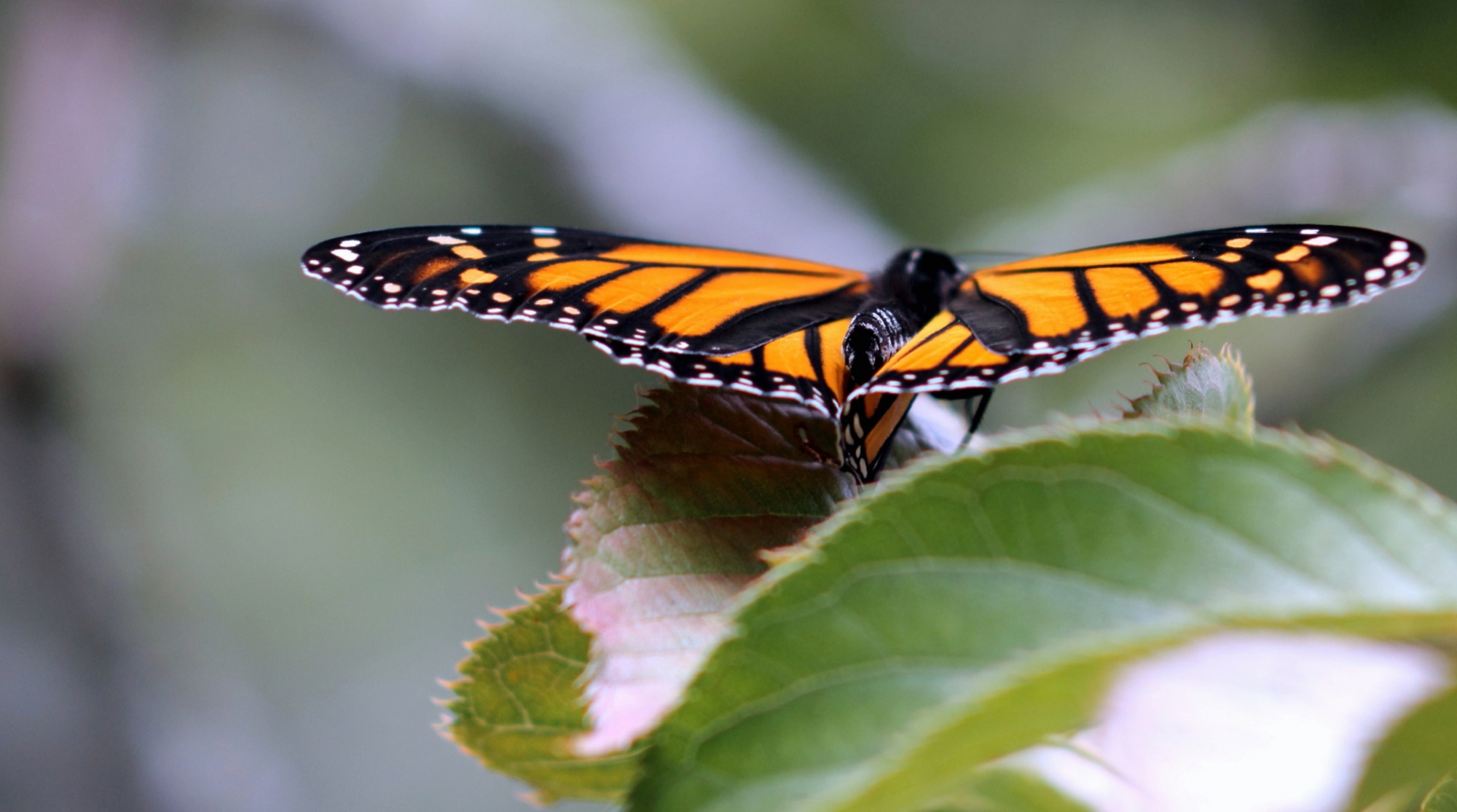

Monarch butterflies in Eastern North America complete one of the longest animal migrations. Often compared to marathon runners, these spotted pollinators traverse the continent, flying for more than two months and up to thousands of miles from their mating grounds as far north as Canada to their wintering roosts as far south as Mexico.
Scientists have long been interested in learning how exactly an insect that weighs less than a paper clip can travel for such long distances. Research up until now has suggested that changes in their metabolism, a voracious appetite for lipid-rich flower nectar, and the shape of their wings all play a part.
But a new study in the journal PLOS One published today finds that the colors on the monarch’s wings might influence its capacity for endurance flight as well. In a nod to the increasingly popular practice of biomimicry, where researchers try to replicate the natural world in engineering projects, the authors hope that studying the colors of the monarch’s wings will help them make drones more efficient.
[Related: Are monarch butterflies endangered?]
The question of how color influences the monarch’s flight began when Mostafa Hassanalian, a professor of mechanical engineering at New Mexico Tech, published a paper about how the colors on the wings of the albatross, a kind of ocean-roaming bird, might help it fly for longer distances. The black on the top of the bird’s wings absorbs more solar energy, creating a pocket of warm air; the white on the bottom absorbs less. Together, the opposite colors create more lift and less drag, helping the albatross to soar more efficiently. The temperature difference between the two sides of the wings could be up to 10 to 25 degrees Celsius, depending on the amount of sun they receive, according to Hassanalian.
Andy Davis, a research scientist at the University of Georgia who studies monarchs, saw Hassanalian’s paper and wondered if the same might apply to the North American butterfly. The pair soon came into contact, and along with three other experts, began to investigate if the orange, black, and white pattern on the monarch’s wings determined how far it could fly. First, they measured the proportions of colors on 400 pairs of wings from preserved milkweed butterflies, including Eastern monarchs at different stages of their life cycle. Then they performed image analysis on the right wing of each specimen to figure out the size of the spots.
The team determined that the butterflies who survived the migration to Mexico tended to have 3 percent less black pigment on their wings and 3 percent more white pigment, a surprising contrast from the albatross. They also found that the Eastern monarchs had significantly larger white spots than other milkweed butterflies that didn’t complete long-distance journeys. Previous research also identified deeper shades of orange on the wings of Eastern monarchs, which migrate farther than the Western and Floridian populations.


The authors still don’t know why the migrating monarchs have larger white spots, but their guess is that the alternating color patterns give them an aerodynamic advantage. “The trailing edge [of the monarch’s wing] is all black, and then you have the white spots,” Hassanalian explains. “White is cool air; black is hot air. So cool and hot, it will change the flow patterns in the trailing edge. And that would allow them to save more energy, enhance their dynamic efficiency, and make it easier to fly.”
No one has directly studied how the white patches on the monarch’s wings influence their flight, says Micah Freedman, a postdoctoral fellow who studies monarch migration at the University of British Columbia. Still, the size of the patches is relatively small. “To the untrained eye, it probably wouldn’t look like a big difference,” he says. “But when you use image processing software, it picks up on a difference.”
Hassanalian, Davis, and their team are planning more projects to validate this hypothesis. Their future experiments could involve building artificial monarch wings with different colors and putting them in a wind tunnel. They might also expose their models to smoke and lasers and use a high-speed camera to visualize the flow patterns around them. “These ideas here are so brand new,” Davis says. “I’ve been studying monarchs for 25 years or so. No one knows what these spots are for. We’ve never known.”
Should the connection between white markings and flight performance prove true, they plan to apply it to drone technology. If small coloration effects “can improve like 10 percent of your efficiency, that’s a lot,” Hassanalian says. “Another aspect is your drone would be able to carry more, because this coloration helps them gain extra lift.” The enhancement could also benefit other aircraft, but he points out one caveat: Planes fly at a much faster speed than butterflies, so coloration may not be as relevant to them. Still, one of his graduate students is currently researching if coloring the tips of a plane’s wings black could reduce fuel use.
[Related: This ‘airliner of the future’ has a radical new wing design]
“This is bio-inspiration at its best here,” David adds, “because we’re learning from the butterflies that have evolved for eons on how to be better fliers.”
